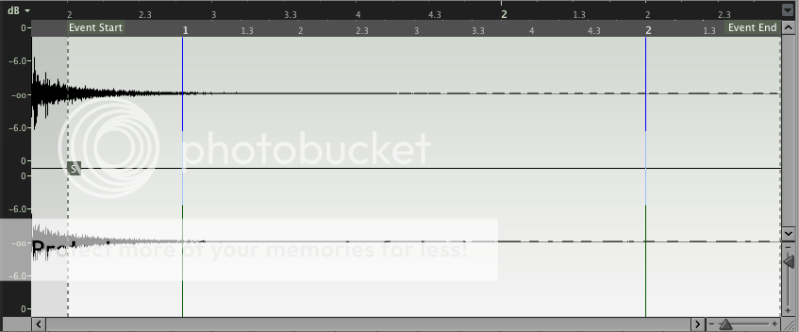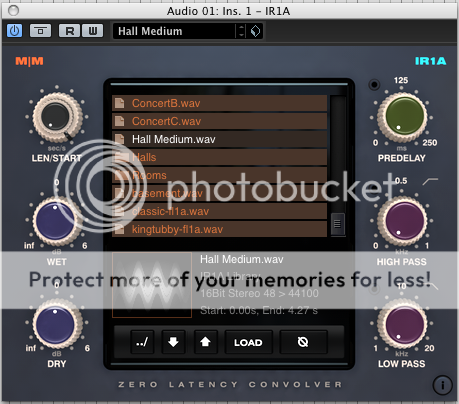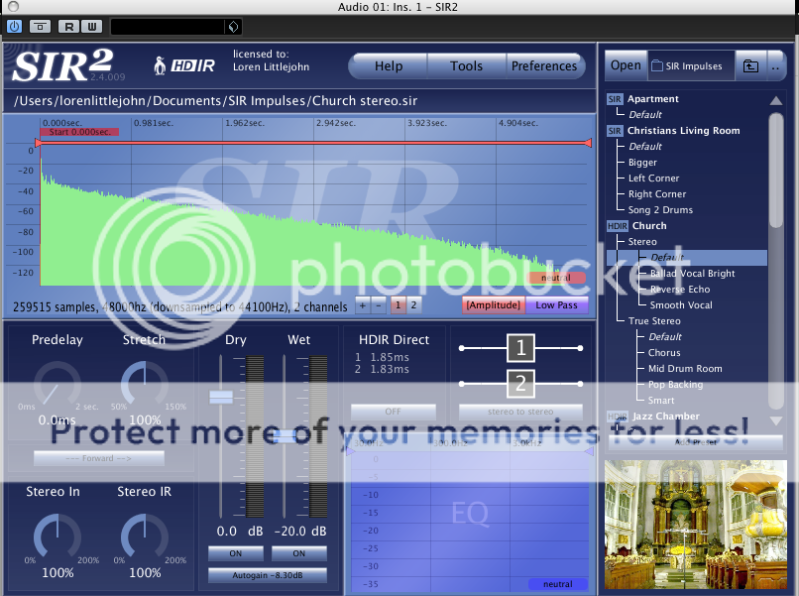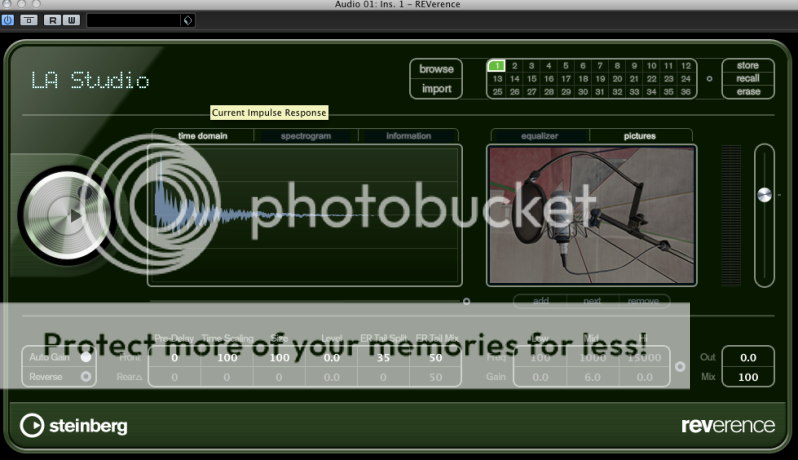chrisharris
King of Bling
Seriously...talk to me like I'm 5 years old, here.
Seriously...talk to me like I'm 5 years old, here.
Thar she blows !Ok, I have a followup question:
What the fuck?
I guess the more common place you see an impulse response (IR) used is with reverb.
In the case of reverb, an impulse response is (as already mentioned) a capture of the reverb response to an impulse sound in a particular space
So if you wanted to make it sound (somewhat) like a vocal was being performed in the Sydney Opera house, find an Impulse Response that was recorded in the opera house, load it into your convolution reverb plugin and use it as your reverb for the vocal, hey presto you have an approximation of how that vocal would sound if it had been performed in the Sydney Opera house (or at least in the exact spot the mic was placed to capture the impulse response)
Many convolution reverbs will also allow you to record your own impulse responses as well as offering a large selection of premade ones. So if you love how the reverb sounds in the stairwell at your office or in the shower for example, you can capture an IR and use it as a reverb in your mixes
The benefit of an Convolution Reverb using IRs is they often sound more natural (less metallic to my ears) than just a pure algorithm reverb. The downside is convolution reverbs can eat up a lot of CPU applying those IRs to the sounds
You could also use IRs to capture how a signal is affected by a particular piece of equipment, like a guitar cab or any of a million other things
Thank you very much for the explanation. I sort of had an idea of what it was, but no idea how to go about using one. So now I just need to look for the thing highlighted in red up there and try it out.
Sounds like fun...and out of the hundreds of thousands of digital reverb choices I have, I don't love any of them.
You use Reaper?
Reaverb is the plug you want.
The interesting thing about convolution reverbs is that it is not just impulse files that you load into them. You can load in any WAV and use that to generate a 'reverb'. You can generate some freaky effects that way.
I don't understand what you mean, but I'll try it.
So...I could totally isolate my vocal by singing with one of those mobile vocal booths, then I could create an impulse of my room, then mix that reverb back into the vocal. OR....I could just ditch the booth, lol.
Seriously...talk to me like I'm 5 years old, here.



First trying Poppa bears reverb Goldilocks said "this reverb is to Hot", then she tried the next one, Momma bears reverb and said "this reverb is to cold" then went to the baby bears reverb and said "this reverb is just right!"

Ahh...ok, cool. Does it have impulses in there? I'm assuming you can download impulses from...places, right?
I'm getting lazier in my old age, but it's not that I'm too lazy to open Reaper and figure it out...I'm not near my DAW right now, so I can't.
And Daddy bear went over to his "recording machine" and took a long look then screamed "Who's been messing with my convolution reverb ?".....Seriously...talk to me like I'm 5 years old, here.




I've got some good ones if you want them.
